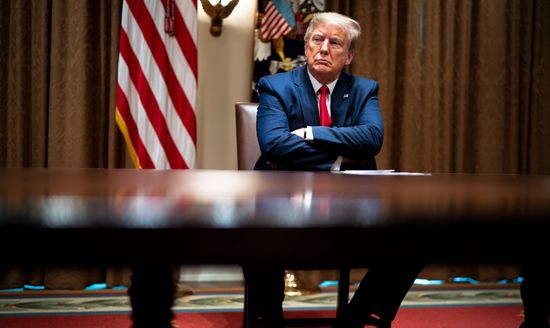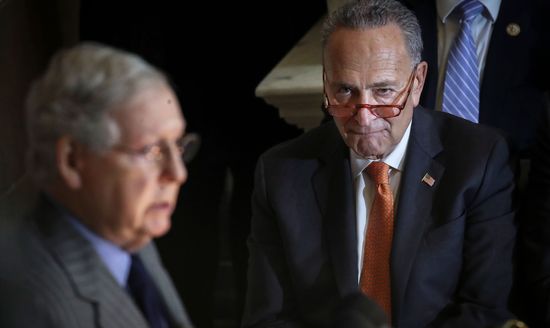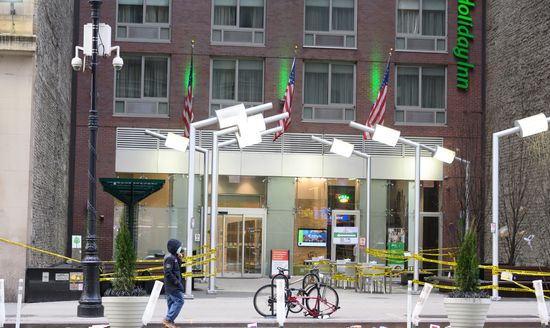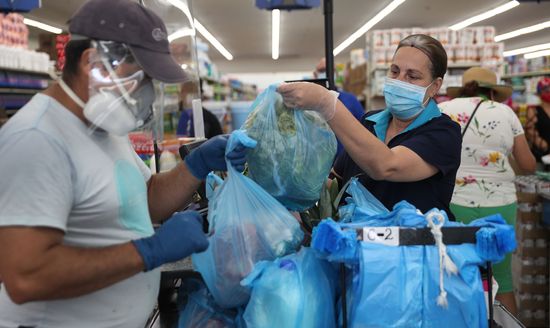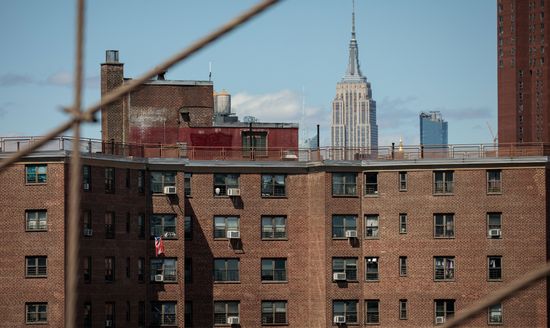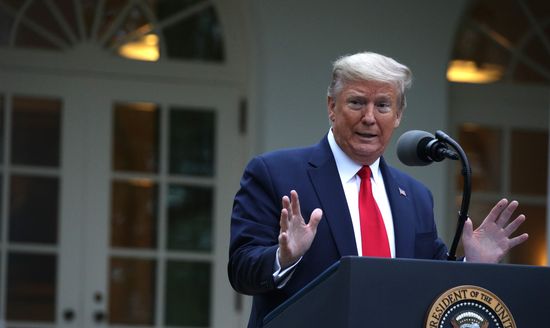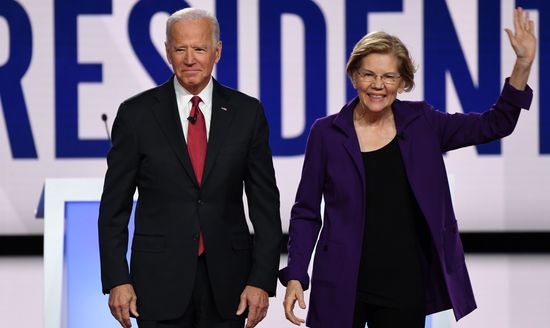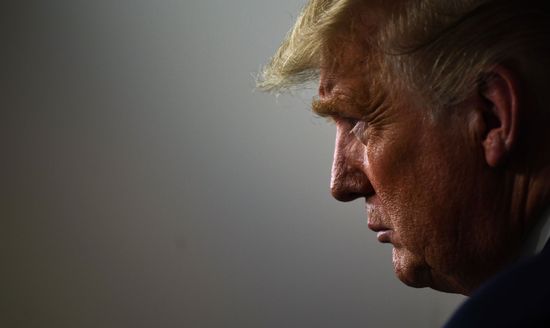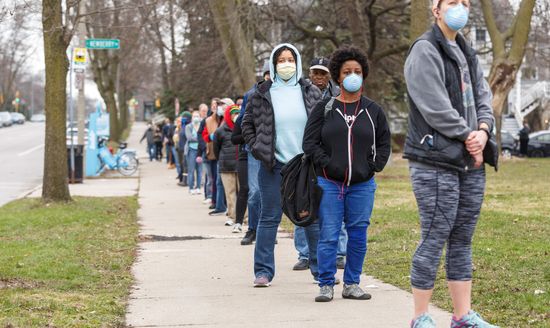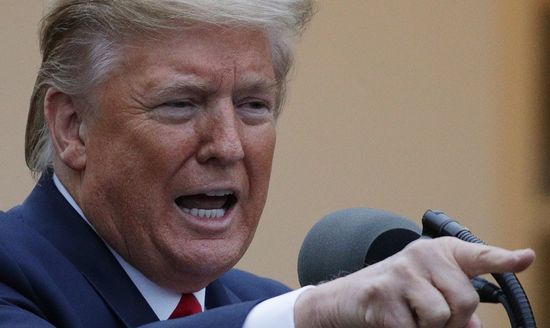| Ben: The stock market was fairly late to react strongly to the coronavirus pandemic. But starting in late February, it began to plummet, then swing wildly between poles, as lockdowns intensified and then the government initiated massive stimulus. The Dow Jones Industrial Average has fallen about 6,000 points off its February highs, a very substantial drop. But it seems to have stabilized in that general range over the last couple weeks — which seems somewhat surprising, given that there is no great sign of the country’s economy returning to full strength anytime soon. Most economic forecasts are dire: the IMF says the world is looking at the worst downturn since the Great Depression. Why does the market seem at least marginally more optimistic than the situation on the ground looks? | | Josh: Well, so — first of all, the market is still down a lot from its high, as you note. So this isn’t the market saying everything is okay; the market is saying the economic outlook is still severely impaired, though not as severely as was feared a few weeks ago. On the other hand, this stock-market drop is a lot smaller than the one caused by the 2008–9 crisis, so the market is not pricing in the worst economic downturn since the Great Depression. This crisis is a lot different from the last crash. It is setting in so much faster — in a way that makes sense, given how suddenly so much of the economy has essentially closed. Unemployment is likely already substantially much higher than it ever got in the last recession. | | There are two key questions: how long the most severe economic disruptions will go on, and how quickly economic activity will come back when the disruptions abate. And I think the recent, relative optimism in the markets is driven by an expectation that these questions will have better than expected answers. The number of deaths is likely to come in well below the worst forecasts. The Chinese economy is on its way to reopening, and you’re starting to see some of the first steps in Europe — Denmark is reopening schools, for example. | | I think it’s possible that the markets have gotten overly rosy in their expectations about that timeline, but I’m not sure. As for the speed of the recovery, part of what has stabilized the markets has been very robust public-policy interventions aimed at preserving business and household finances, so people will be financially able to return to normal when they are epidemiologically able to do so. | | CARES Act programs should go a long way toward keeping household finances healthy — the unemployment payments replace 100 percent or more of income for most workers making up to about $50,000 a year. Issuance of the PPP loans has been slow going, but they will help small businesses keep millions of workers on the payroll. And the Fed’s actions have been highly effective at keeping the liquidity of credit markets so large that businesses are able to borrow. | | The hope is basically that, when parts of the economy are switched back on, businesses will rehire the workers that have been laid off, households will be able to spend because their lost income was replaced with government benefits, and the economy will bounce back much, much faster than last time. So even if the maximum percentage drop in GDP is much larger this time, the total amount of economic activity lost will be smaller than in the 2008–9 crisis because of the rapid bounce-back. That’s the hope, anyway. | | Ben: To what extent do you think Wall Street’s relative bullishness is driven by big business’s view that the government will do everything in its power to bail them out — even if the outlook for the economy at large still looks extremely shaky? Is this a case where the market’s status could be disconnected from what’s happening in the average American’s life, which we saw quite a lot of in the aftermath of the Great Recession? | | Josh: I think that’s a false dichotomy. First of all, it took until 2013 for stocks to return to their 2007 peak, so it’s not like financial markets exactly had a quick bounce-back last time. Businesses need customers to be profitable, and a downturn in which households are devastated and can’t spend won’t be good for stockholders. | | If you look at the specific provisions in the CARES Act, they are not especially generous to large businesses. The trillions of dollars in support being made available to large companies are (with a handful of exceptions that I’ll get to in a moment) loans, not grants. The government is making sure big companies have access to credit, which helps them keep the lights on in a time where the financial system could otherwise get disrupted. It’s not giving them money. | | Except the airlines are being given money, in recognition of the special impacts this crisis has on them and the essential nature of airline service. The grants for airlines were heavily backed by the unions representing airline workers, who don’t want to see the airlines put through a bankruptcy that could lead to the rejection of their existing union contracts. So that’s a direct example where workers believe they gain, because the government is providing financial support to the company they work for. And the airline grants bar the airlines from involuntarily furloughing workers during the time when they’re being supported by the grants. The Trump administration also used discretionary authority it has under the law to require the airlines pay back part of the support they’re getting. | | There are some other limited circumstances where large firms can get grants. There may be some money to Boeing. And there’s a lot of money for hospitals. With hospitals, the nexus to public benefit is again clear. | | The far more generous provisions aimed at business go to small businesses. They get loans that turn into grants, so long as they meet certain requirements related to keeping employees on payroll. That has a big benefit for workers, since it keeps a lot of people employed. But a lot of those grants will end up going to businesses that would have kept paying their workers anyway, so there will be significant leakage of the benefits to owners of small businesses — which can be up to 500 employees, so not always that small. | | And there’s a lot of money for households. People talk a lot about the $1,200-per-person checks and how that’s not that much, but the bigger deal is that unemployment benefits are enhanced by $600 a week. That means unemployment benefits will often be over $4,000 per month. | | One of the most important goals of these policies is to prevent a self-perpetuating crisis. There must be lost economic activity because certain activities, like travel and entertainment, must stop right now. What macroeconomic policy can do is limit the extent to which that stoppage of activity leaves people without income, so they stop spending not because what they want is unavailable but because they don’t have money to buy what they want. The policies you implement to stop those knock-on effects will necessarily often go through businesses. | | Ben: At this point, what would cause another major crash, the likes of which we saw in late February to mid-March? It seems like a lot of the negative effects of the pandemic are already priced in, so are investors just waiting to see if things will get better on an epidemiological level? | | Josh: I think the markets have priced in the idea that there will be a significant normalization of economic activity over the next few months. Morgan Stanley released a note to clients this week suggesting a lot of people would be returning to work in June, and many more over the summer. States are starting to put together the resources they will need to prevent a new epidemic while reducing restrictions on human activity — testing, surveillance, and the like. I think one risk to the markets is that this approach might not work. Maybe governments will not be able to ramp up the capabilities they need fast enough, or maybe the new measures won’t be effective enough to prevent uncontrolled outbreaks. In that case, we could need longer and more disruptive economic restrictions than are currently priced in. That would both mean more lost economic activity last year and more difficulty putting all the pieces back together when we reopen. | | There are also certain sectors of the economy that will have enduring effects, even if most activity is somewhat normalized. Even if people are mostly back in their workplaces this summer, that doesn’t mean we will have concerts or cruises. So I think, basically, the risk is that this stuff is worse than expected — more economic effects for longer that are more difficult to recover from. | | |

